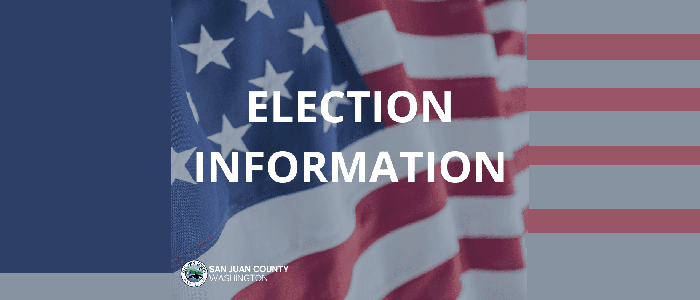||| FROM BRENDAN COWAN, et. al, for SJC DEPARTMENT OF EMERGENCY MANAGEMENT |||
Fellow islanders,
Following the catastrophic Maui fires earlier this month, there has been an understandably heightened level of concern about fire risk in the San Juan Islands. This includes what steps we can take to protect ourselves and what plans and systems are in place to protect our community. This letter aims to answer some of the most common questions and provide resources for residents to learn more.
Q: How severe is the fire risk in the islands?
A: Describing risk is nuanced, but there are a handful of key points to understand. We’re going to explain this in a bad news-good news-bad news way.
- First some bad news: once the rains stop in early summer, island locations with a high density of tall grass very quickly become potential fire hazards. These are the places we see with the classic dried out yellow grass or hay seen in locations across the islands. Fires start relatively easily here, may spread quickly, and can impact houses where un-mowed vegetation comes right up to the actual structure.
- However, there is good news: even in late summer these grass fires usually slow down considerably and become much easier to contain once they hit denser woodland where trees, salal, and larger shrubs dominate. Overall, the fire risk in the islands is much lower than the dry sides of the Hawaiian Islands, most of the rest of Washington, and virtually the entire state of California. This is due to a range of climate factors, including generally high humidity due to our weather coming off the ocean (and the islands being surrounded by water), lower daily and overnight temperatures, the high prevalence of morning dew, and a lack of thunderstorms with lightning. These conditions all factor in to lower the likelihood of a catastrophic wildfire in the islands except in very rare circumstances.
- Here’s the final bad news though: there are rare (every 10 years or so) weather events where much drier air comes to the islands from the east, often accompanied by wind. These conditions are well forecast and usually only last for a couple of days, but they can create conditions where fire behavior can be much more extreme and overwhelm our local fire agencies and spread quickly. The lack of fire and widespread animal grazing in the islands since the end of Coast Salish and early settler land management practices has led to more densely stocked forests that are an increasing fire risk, especially when coupled with an increase in homes and other structures in the island landscape.
The bottom line is that the islands are in relatively good shape in terms of fire risk, even in late August. That said, there are basic precautions we need to take, and we need to understand that it is possible to see more dangerous conditions on occasion.
Q: What steps can residents take to reduce their risk?
A: There are three primary areas of focus for reducing risk:
- Avoid starting fires in the first place. Nearly all fires in the islands result from human activity. Some of those activities are obviously bad ideas, like unattended or illegal campfires, fireworks, or burning brush illegally. Other activities may seem reasonable but catch people by surprise. Anything using metal blades that could strike against a rock and create a spark could cause a fire – mowing, grinding metal, chainsaw work, plowing. If this work is done during the summer, water should be on hand, those doing it should carefully look for fire starts, including long after the work is done, and the work should be postponed if fire conditions seem especially dangerous. Working in the morning, when moisture is present and temps are cooler is always safer than working later in the day. People have also started fires by parking cars in tall grass, by burning weeds, or by their tiki-torch tipping over. In short, use common sense and don’t be the one who sparks a fire in your community.
- Islanders need to take steps to protect their homes in advance. This means keeping a defensible space around your home, not stacking wood on your porch or against your house in the summer, keeping your gutters clear of debris, and limiting ways for an ember to start a large fire should it land near your house. More information about this is available at www.firewise.org, or by contacting your local Fire Department for help (more on this below).
- Islanders should take some time to talk through evacuation with their household. Think what routes there are to exit from your property, what would be a likely back-up route if your first choice was blocked, and how they might transport any pets you own. Islanders should also have small “go-kits” with extra clothes, blankets, flashlight, shoes, and other essentials that could be taken in an emergency.
Q: What systems are in place to notify residents of a wildfire or need to evacuate?
A: The primary means of notifying the public of any significant emergency, including wildfire is a “Reverse-911” type system that allows for notifications to be sent to both landlines and cell phones. You do not need to sign up in advance to receive these notifications, however it is recommended that you do so via the County Department of Emergency Management’s alerting tool at www.islandsready.org/signup. This will let you add your email and street address and ensure all your phone numbers are in the system- this is the best way to ensure your location is included in an area based notification.
In addition, notice would likely be shared via local media or news blogs, and by door-to-door notification if able to be done safely. Note that sirens are not used locally for notifications- sirens are not effective at reaching people inside buildings, especially in densely wooded and hilly landscapes where sound does not travel well.
It is important that islanders use common sense at all times. If you smell smoke during a burn ban, report it to 911. If you see signs of a fire, prepare to evacuate whether you have received a notification or not, and if it appears too dangerous to safely evacuate, it may be necessary to shelter in place. Don’t wait for instructions if your common sense is telling you it is time to act- far better to go early and end up with it being a false alarm than the other way round.
Q: Are there designated escape routes or evacuation zones? Is there a plan for evacuating residents off of their island?
- A: Because wildfires are inherently unpredictable, it is not only difficult to define the specifics of an evacuation in advance, but it could be extremely dangerous to do so. What might be the right move in one situation could be the exact wrong move in another. If an evacuation is required it will be described using commonly understood landmarks and street names and as soon as possible a map will be created and shared that will show evacuation zones and routes clearly.
- If an evacuation is ordered, residents may be directed to a specific location, but residents are also advised to think through what safe spaces may be located near to where they live and work. These can be large paved, gravel, or closely mown areas such as parking lots, parks or playfields, airstrips, beaches, or gravel pits. While experiencing a catastrophic fire from one of these locations would be scary, they would likely afford a higher level of safety than trying to evacuate a large number of islanders from a single exit point (the ferry landing). Safe zones are scattered across the islands and your local Fire Department can help talk you through what ones may be close to you if you’re not sure,
Q: I live on an outer island. What steps should I be taking?
- Your steps are the same as listed above, but it is even more critical that you prepare your property in advance as any firefighting resources will be some time in getting to you.
Q: What steps has OPALCO taken to prepare for mitigate against wildfire?
- OPALCO has a proactive wildfire prevention plan and takes action routinely to help protect the islands. More details are available at: https://www.opalco.com/quick-fact-wildfire-mitigation/2023/08/.
Q: Where can I learn more or get help with preparing?
- Visit www.firewise.org for detailed information on preparing your home for wildfire and other info. Visit www.islandsready.org/wildfires for links to other resources and contact information for your local Fire Department.
Note that all San Juan County Fire Departments gladly work with islanders to discuss their risks, share ideas about how to better protect their property, and will help you talk through your evacuation plans. Reach out!
In addition, the San Juan Islands Conservation District assists forest property owners in the islands with developing plans to manage their land and can provide funding assistance to help minimize fire risk. Whether you own a few wooded acres or a much larger area of timber, they’re willing to help. More info at: https://www.sanjuanislandscd.org/forest-stewardship
In conclusion, we want to highlight that we all have tremendous appreciation for this community, its people, and its landscapes. We and our dedicated teams are working hard to keep San Juan County safe. Being concerned about fire in the islands is perfectly understandable, and indeed, is a basic core responsibility of all islanders. We want to encourage the community to use that concern to motivate positive action. We can’t ignore the risk, and we do have the power in our hands to help mitigate it.
Please reach out to us directly if you have further questions, suggestions, or concerns.
Sincerely,
Paul Andersson
District Manager, San Juan Islands Conservation District paul@sjicd.org
Adam Bigby
Chief, San Juan Island Fire District #4 (Lopez Island) abigby@lopezfire.com
Norvin Collins
Chief, San Juan Island Fire District #3 (San Juan Island) chief@sjifire.org
Brendan Cowan
Director, San Juan County/Town of Friday Harbor Department of Emergency Management brendanc@sanjuanco.com
Chad Kimple
Fire Marshall, San Juan County chadk@sanjuanco.com
Eric Peter
Sheriff, San Juan County ericp@sanjuanco.com
Jon Shannon
Chief, San Juan Island Fire District #5 (Shaw Island) sjcfpd5chief@gmail.com
Holly vanSchaick
Chief, San Juan Island Fire District #2 (Orcas Island) hvanschaick@orcasfire.org
**If you are reading theOrcasonian for free, thank your fellow islanders. If you would like to support theOrcasonian CLICK HERE to set your modestly-priced, voluntary subscription. Otherwise, no worries; we’re happy to share with you.**









This is timely and useful info. Makes me feel better. I’m grateful for our Fire Departments putting this together and being willing to help us prepare.